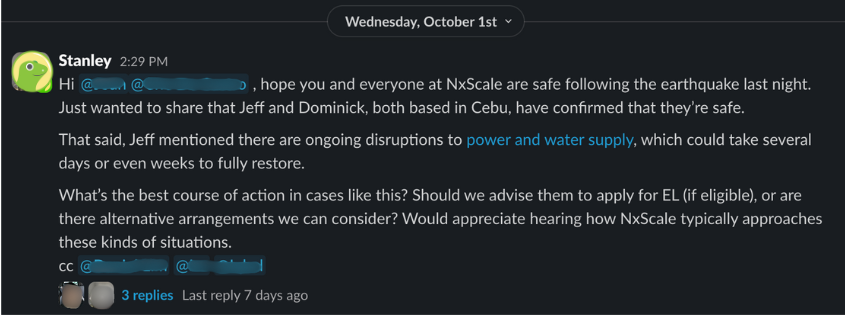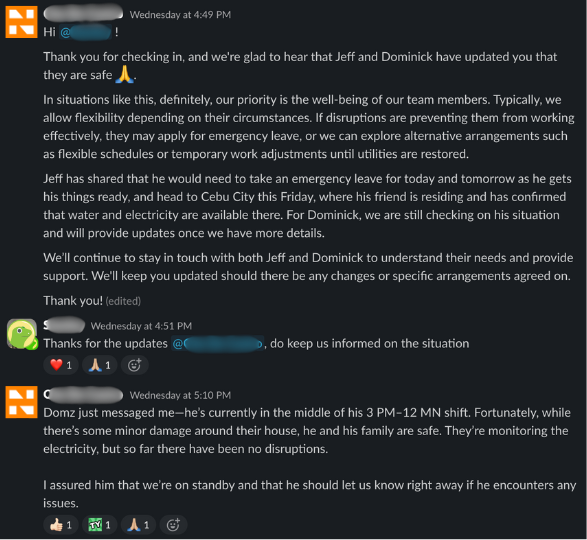
The Strategic Shift: How RPO Is Reshaping Workforce Solutions in Australia and Beyond
The Strategic Shift: How RPO Is Reshaping Workforce Solutions in Australia and Beyond
The Australian business landscape is experiencing a notable transformation in how companies approach talent acquisition. As organizations grapple with skills shortages, evolving employment expectations, and the need for operational agility, Recruitment Process Outsourcing (RPO) has emerged as more than just a hiring solution—it’s becoming a cornerstone of strategic workforce planning.
The Australian Context: Why RPO is Gaining Momentum

Recent insights reveal a significant shift in Australian workplace priorities. With 68% of employees worried about potential redundancies in their workplace, workers are now prioritizing job stability over higher pay. This evolution in mindset coincides with businesses reassessing their internal capabilities and asking themselves a fundamental question: What should we truly own in-house, and what can we execute more effectively through partnerships?
The answer, for a growing number of companies, involves RPO. The global RPO market is predicted to increase by $13.93 billion between 2024 and 2029, with a compound annual growth rate of 19.6%. This isn’t simply a trend—it’s a fundamental restructuring of how organizations approach talent acquisition.
Rather than maintaining expensive, fixed recruitment infrastructure that may sit idle during quieter periods or become overwhelmed during growth phases, businesses are discovering the flexibility that comes with outsourcing recruitment processes. It’s not about replacing internal teams entirely; it’s about augmenting capabilities, accessing specialized expertise, and creating scalable systems that adapt to business cycles.
This approach aligns perfectly with the stability Australian workers are seeking. Where salary once reigned supreme, workers are now placing greater value on stability and long-term career growth. Today, a steady job with dependable prospects often outweigh a higher paycheck. When recruitment processes are more efficient and strategic, companies make better hiring decisions, reduce time-to-hire, and ultimately create more stable, well-matched employment relationships.
The Global RPO Evolution
What starts as a workforce transformation strategy in one market often reveals broader opportunities on a larger scale. The RPO industry is experiencing significant evolution globally. In a forecast report by Technavio, the Asia-Pacific region dominated the market and accounted for 37% growth during the forecast period (2025-2029), generating cost savings of up to 25-50%. The market share of RPO in the global talent acquisition industry is projected to reach 40% by end of 2025.
The RPO model has evolved from transactional hiring to strategic recruitment solutions that are deeply integrated into client business goals. This transformation reflects a broader recognition: if RPO makes sense for managing talent acquisition domestically, the logical next question becomes, “where else in our operations could strategic outsourcing create value?”
This is where the conversation naturally expands beyond recruitment to comprehensive offshoring strategies.
The Philippines Advantage: More Than Cost Savings

The Philippines has established itself as a premier destination for business process outsourcing, and the data tells a compelling story. The Philippine BPO industry reached US$38 billion in revenue in 2024, exhibiting a growth rate of 7% versus the 3.5% global average.
The country’s appeal also extends far beyond the numbers. According to the 2024 EF English Proficiency Index, the Philippines exhibited “High Proficiency” in English, ranking second to Singapore in Asia. This linguistic capability, combined with a 97% literacy rate and a labor force participation rate of 64.5% as of September 2025, creates a unique combination of highly educated, English-proficient professionals with cultural alignment to Western business practices.
Beyond these widely recognized advantages lies something more strategic: the ability to build dedicated, integrated teams that function as seamless extensions of your business. Filipino BPO workers have transitioned from basic call handling to managing AI tools, analyzing data outputs, and handling complex escalations. Amid fears of AI displacement, the industry is predicted to grow and provide more jobs. In fact, the BPO sector is seen to be a main driver of the Philippine economy’s growth.
The Smart Scaling Advantage
Consider the typical growth trajectory of a scaling business. You identify a need: perhaps customer support is becoming overwhelming, or your finance team is drowning in accounts processing, or you need specialized technical skills but can’t justify full-time salaries in expensive labor markets. The conventional response is to either overextend current staff or commit to expensive local hires despite being uncertain of long-term needs.
Offshoring to the Philippines through a strategic partner offers a different path. Companies can employ well-trained graduates in many fields at competitive rates. However, the economics, while straightforward, aren’t the entire story.
The real value emerges in the flexibility and scalability. The Philippines is embracing the evolution toward knowledge process outsourcing (KPO) as jobs shift from business process transaction-based tasks to knowledge-based work such as market research, legal processing, medical transcribing, fraud analytics, and web development. Offshoring to the Philippines allows you to expand teams during peak periods, access specialized skills for defined projects, and test new operational models without betting the farm on unproven strategies.
Government Support and Infrastructure Maturity
The Philippine government has demonstrated sustained commitment to the BPO sector’s growth. Companies can now implement up to 50% work-from-home arrangements while maintaining tax benefits. Additionally, under the Philippine IT-BPM Industry Roadmap, the sector aims to reach $59 billion in revenue and employ 2.5 million people by 2028.
This institutional support creates stability for foreign businesses considering offshore operations. The infrastructure has matured significantly—67% of BPO companies have implemented AI technologies, with artificial intelligence being used to augment human workers rather than replace them.
Beyond Cost Savings: The Strategic Maturity of Offshoring
Most early adopters of offshoring began with simple, transactional functions. This is in stark contrast to today’s approach, which is more sophisticated. The Philippine BPO industry now encompasses services far beyond traditional call center operations, including healthcare services that generated approximately $3.61 billion in revenue in 2024, alongside IT, finance, and specialized knowledge work.
The key lies in partnership rather than vendor relationships. Working with an experienced offshoring provider means you’re not navigating international employment law, managing remote infrastructure, or solving cross-cultural communication challenges alone. The right partner handles these complexities so you can focus on your bottomline.
This is particularly relevant for businesses exploring offshoring for the first time. The difference between success and frustration often comes down to the operational maturity of your offshoring partner—their recruitment processes, their understanding of your industry, their technology infrastructure, and their commitment to team member retention and development.
Making the Strategic Assessment

If you’re considering whether offshoring might fit into your growth strategy, start with these questions:
Which functions consume significant resources but don’t require physical presence
Customer service, data processing, content creation, bookkeeping, and technical support are obvious candidates, but looking deeper reveals a bigger story—and more opportunities to save money and maximize resources. Healthcare outsourcing now accounts for a significant volume of work outsourced from the Philippines, while game development and animation services are also fast-growing niches. Many companies also successfully offshore research functions, quality assurance, project coordination, and even elements of product development.
Where are you currently constrained by talent availability or cost?
If you’re struggling to find qualified candidates locally, or if the salary expectations for certain roles are straining your budget, offshoring may provide access to skills that are more readily available and affordable in other markets.
What would operational flexibility mean for your business?
The ability to scale teams up or down based on actual business needs, rather than being locked into fixed staffing costs, can be transformative for businesses with seasonal fluctuations or unpredictable growth patterns.
How mature are your processes?
Offshoring works best when you have reasonably well-defined processes and clear expectations. You don’t need perfect documentation, but you should be able to articulate what success looks like for the roles you’re considering to offshore.
The Technology Integration Reality
Modern offshoring isn’t about shipping work overseas and hoping for the best. Companies are leveraging artificial intelligence, machine learning, and automation to streamline workflows, with cloud-based solutions enabling secure, scalable, and collaborative environments that enhance productivity and remote accessibility. The Philippines BPO sector has been at the forefront of adopting collaboration tools to maintain seamless communication across distributed teams.
This technological sophistication means offshore teams can integrate into your operations far more seamlessly than was possible years ago. Time zone differences, once considered a major barrier, can now be leveraged as an advantage—enabling round-the-clock operations and faster project turnarounds.
The Path Forward
The intersection of RPO growth in Australia and the broader offshoring opportunity reveals an important trend: businesses are becoming more sophisticated about how they structure their operations. The question is no longer whether to outsource certain functions, but rather how to do it strategically in ways that genuinely support growth and operational excellence.
For decision-makers exploring these options, the opportunity lies in finding partners who understand this strategic context. You’re not simply looking for cheaper labor, you’re building a distributed operating model that gives you competitive advantages in flexibility, access to talent, and cost structure.
The businesses that will thrive in the coming years are those willing to question assumptions about how work gets done and where it gets done. They’re the ones who see offshoring not as a cost-cutting measure of last resort, but as a proactive strategy for building more resilient, capable organizations.
The rapid economic growth of the Philippines driven by the continued strength of the BPO sector, combined with the sector’s proven resilience and continuous evolution toward higher-value services positions the Philippines as a strategic partner for long-term business growth. In an environment where employment stability matters deeply to workers and operational flexibility matters deeply to businesses, strategic offshoring offers a path to satisfying both priorities.
Still not convinced? Talk to us today and start leveraging the outsourcing opportunities you’ve been missing out on.

























